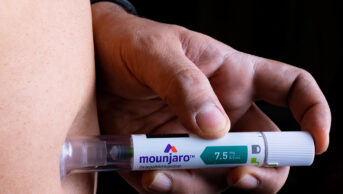
Shutterstock.com
Exposure to antibiotics and acid suppressants in the first two years of life is associated with an increased risk of obesity later in childhood, particularly if prescribed in combination, study results show[1]
.
The study included data on 241,502 children prescribed an antibiotic, 39,488 children prescribed an H2 receptor antagonist (H2RA) and 11,089 children prescribed a proton pump inhibitor (PPI). Obesity was first diagnosed at a median age of three years and was defined as the first body mass index measurement from a clinical encounter that was greater than or equal to the 95th percentile for age and sex.
The researchers found that antibiotic exposure was associated with a 26% increased risk of obesity (unadjusted hazard ratio [HR] 1.26; 95% confidence interval [CI] 1.23–1.28), while acid suppressants were weakly associated with a higher risk (unadjusted HR 1.04 and 1.03 for PPIs and H2RAs, respectively).
But, combinations of exposure to the three medicine types were associated with increasing risk of obesity, with those exposed to all three having a 42% increased risk (adjusted HR 1.42; 95% CI 1.33–1.51).
The authors suggested this association could be driven by the effects of these medicines on gut microbiota. They said the findings underscore the importance of appropriate stewardship with these medicines.
“These findings should give pause to providers who may renew anti-acid medication prescriptions without proven clinical benefit or prescribe an antibiotic course in the absence of a true medical indication,” the team wrote in Gut (30 October 2018).
References
[1] Stark C, Susi A, Emerick J et al. Antibiotic and acid-suppression medications during early childhood are associated with obesity. Gut 2019;68:62–69. doi: 10.1136/gutjnl-2017-314971


